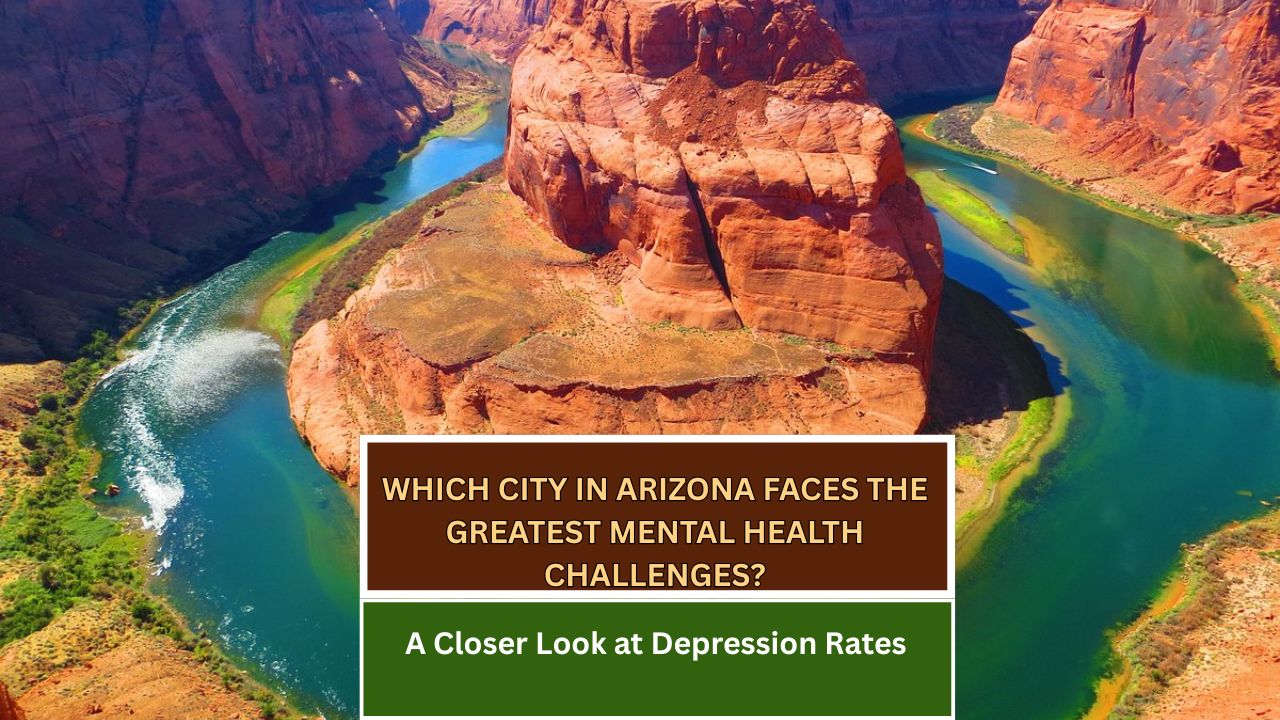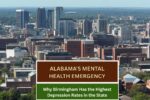Mental health concerns continue to rise across the United States, and Arizona is no exception. While identifying the “most depressed” city in the state can be complex due to limited city-specific data, available reports point to notable patterns in Arizona’s largest urban areas. Cities like Phoenix, Tucson, and Yuma consistently demonstrate key indicators associated with high levels of depression.
Depression in Arizona: A State-Level Snapshot
According to America’s Health Rankings, 18.0% of adults in Arizona report having been diagnosed with a depressive disorder. This places Arizona 9th in the nation for depression diagnoses.
The issue is further highlighted by the Kaiser Family Foundation (KFF), which reports that 35.8% of Arizona adults experienced symptoms of anxiety and/or depressive disorder in February 2023, exceeding the national average of 32.3%.
While statewide statistics help illustrate the broader mental health landscape, the differences between cities are also noteworthy.
Phoenix: A National Hotspot for Depression Indicators
Phoenix, Arizona’s largest city, ranks high nationally for self-reported feelings of depression. A study by Lakeview Health found that Phoenix had one of the highest percentages of adults experiencing depressive symptoms among U.S. cities analyzed. The data revealed elevated levels of suicidal ideation, chronic fatigue, and low life satisfaction among Phoenix residents.
Several factors may contribute to this trend:
- Rapid urbanization and population growth
- High cost of living relative to wages
- Limited access to mental health services in underserved communities
In response, Phoenix has begun investing in behavioral health crisis response teams to address mental health emergencies without over-reliance on law enforcement.
Tucson: A Parallel Struggle with Mental Health
Tucson, the second-largest city in Arizona, also shows significant indicators of depression and mental health concerns. While it shares some demographic and economic similarities with Phoenix, Tucson faces its own unique challenges, including:
- High poverty rates
- Substance abuse issues
- Insufficient mental health infrastructure in some communities
According to data from the National Institute of Mental Health (NIMH), symptoms such as persistent sadness, lack of motivation, and sleep disturbances are commonly reported by Tucson residents accessing public health resources.
Pima County, which encompasses Tucson, has made strides in improving care access through its Community Mental Health Center, yet demand continues to outpace supply.
Yuma: Economic Instability and Its Mental Toll
Yuma may not be the largest city in Arizona, but its economic challenges play a critical role in residents’ mental health. According to the U.S. Bureau of Labor Statistics, Yuma has historically recorded some of the highest unemployment rates in the country. In 2018, its unemployment rate peaked at 20.9%.
Though direct depression rates in Yuma are harder to obtain, economic instability, low job availability, and limited access to care are commonly linked with increased psychological stress and long-term mental health issues. The Arizona Department of Health Services (ADHS) has launched mobile mental health programs to serve rural and underserved areas like Yuma.
What Drives Depression Trends in Arizona Cities?
Several statewide factors influence depression in Arizona’s cities:
- Access to care: Rural and low-income areas often lack sufficient psychiatric services.
- Climate: Extremely high summer temperatures, especially in Phoenix and Yuma, can worsen mood disorders like Seasonal Affective Disorder (SAD).
- Cultural stigma: Mental health remains a sensitive topic, especially in underserved communities and among men and older adults.
The Substance Abuse and Mental Health Services Administration (SAMHSA) offers several resources, but implementation often varies by region.
Moving Forward: Addressing Arizona’s Mental Health Crisis
Efforts to address mental health concerns across Arizona include:
- Increased funding for community mental health clinics
- Crisis hotlines like the 988 Suicide & Crisis Lifeline
- Expansion of telehealth services through Arizona Medicaid (AHCCCS)
Local governments and healthcare providers are working to destigmatize depression and expand access, but much remains to be done to meet growing demand.
This article has been carefully fact-checked by our editorial team to ensure accuracy and eliminate any misleading information. We are committed to maintaining the highest standards of integrity in our content.

Outside of work, he enjoys playing chess, following cricket, and writing short stories. His commitment to integrity and in-depth analysis strengthens OTE News’ mission of providing trustworthy journalism.




